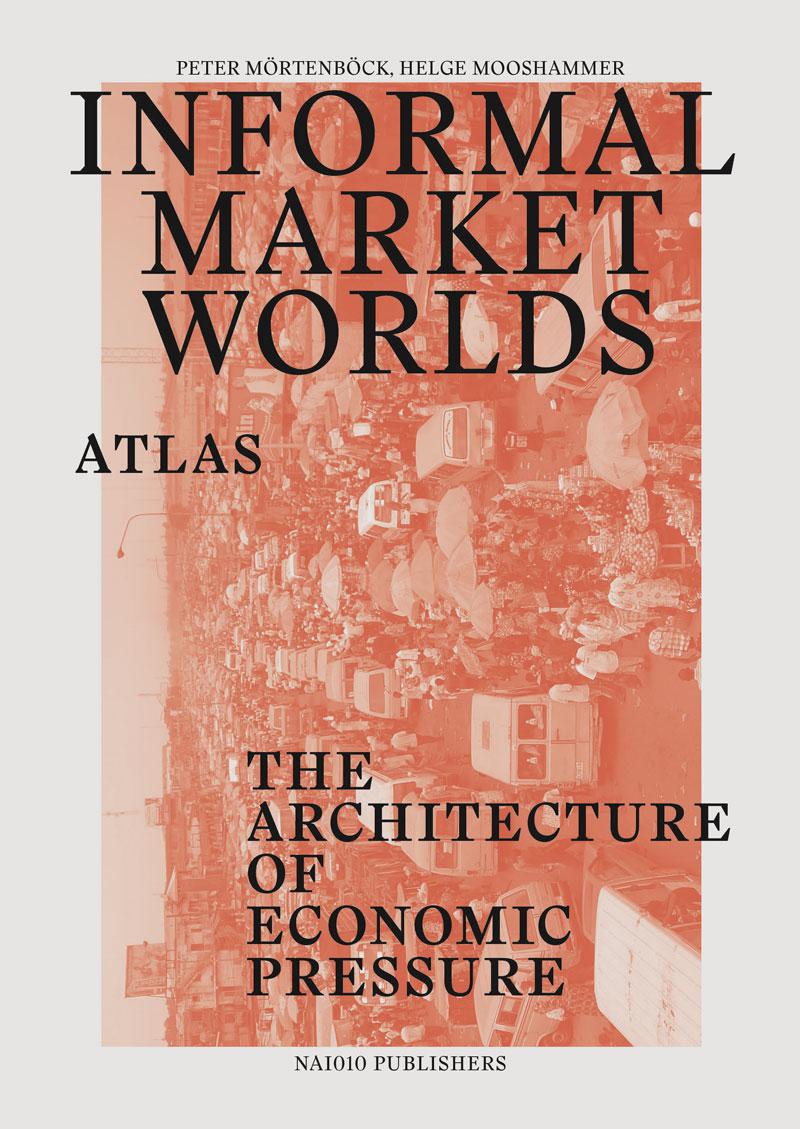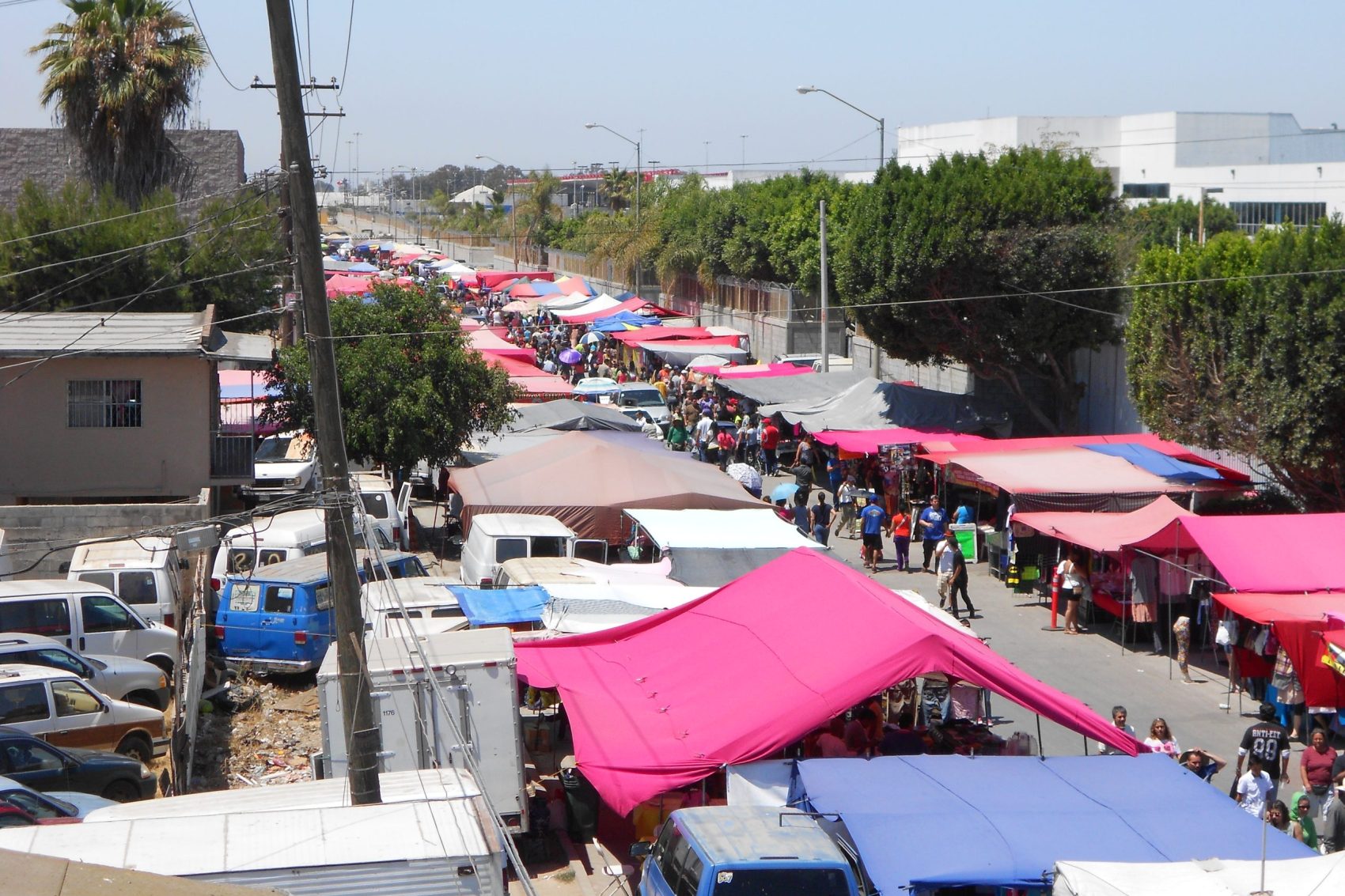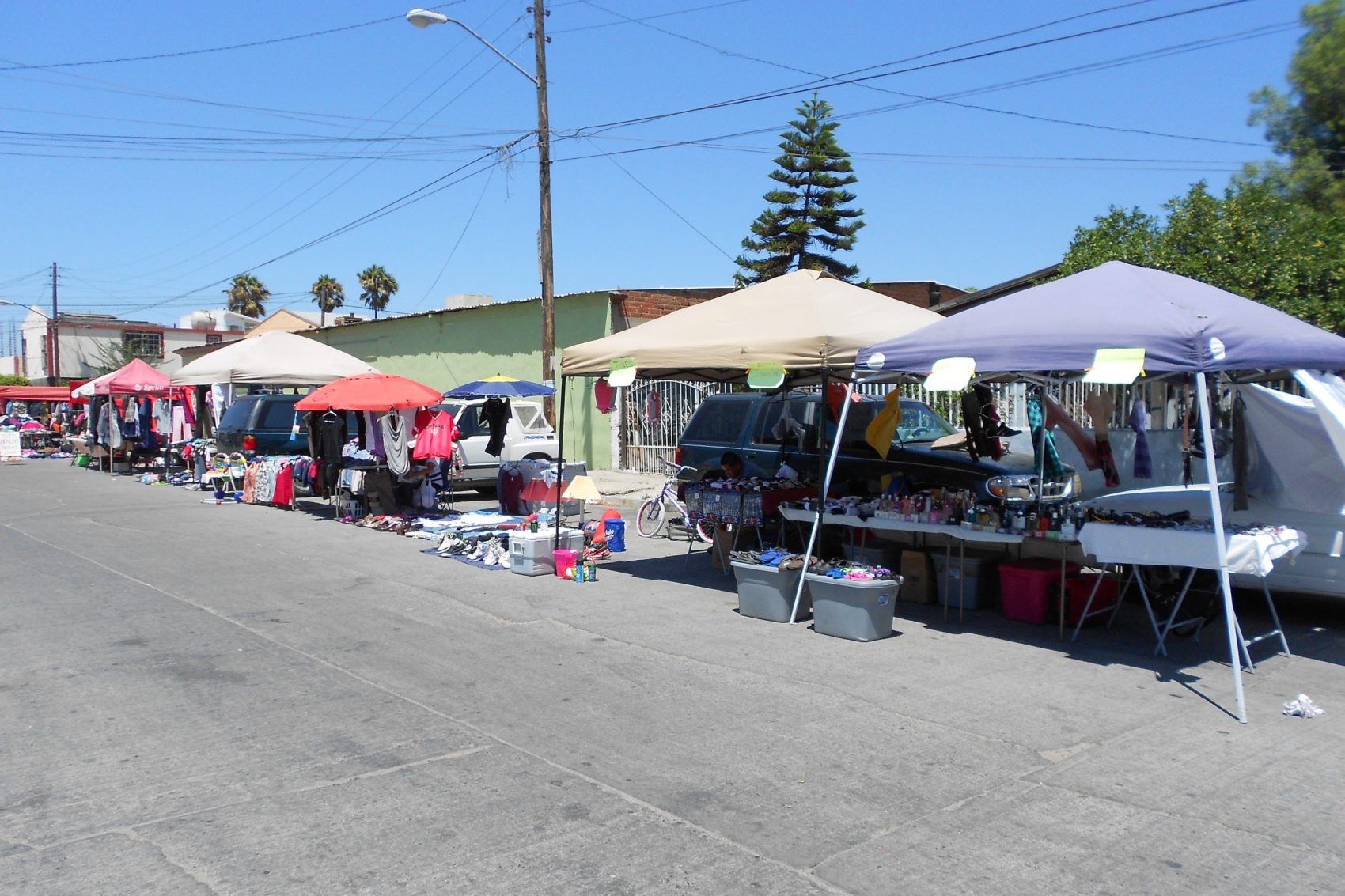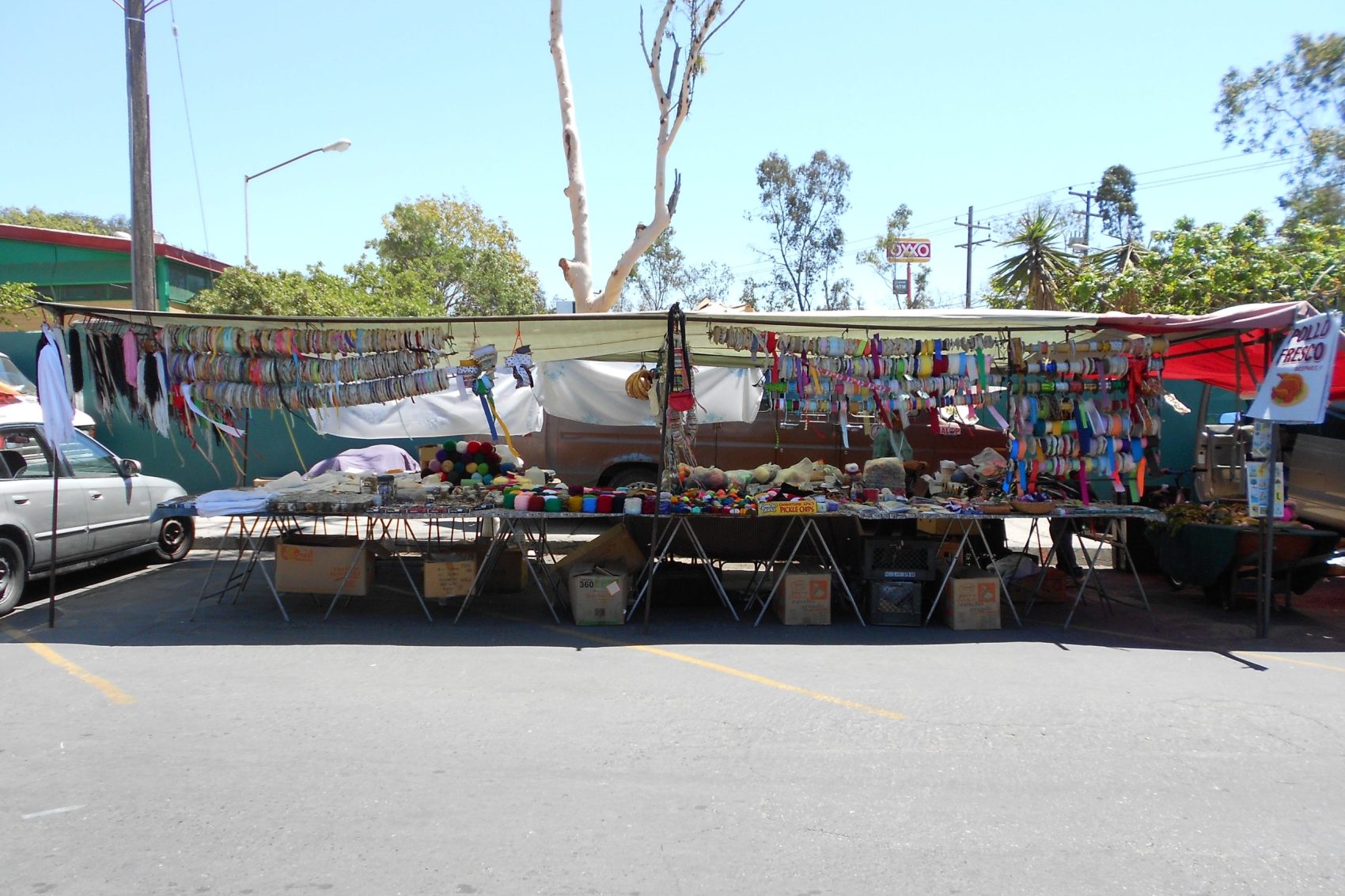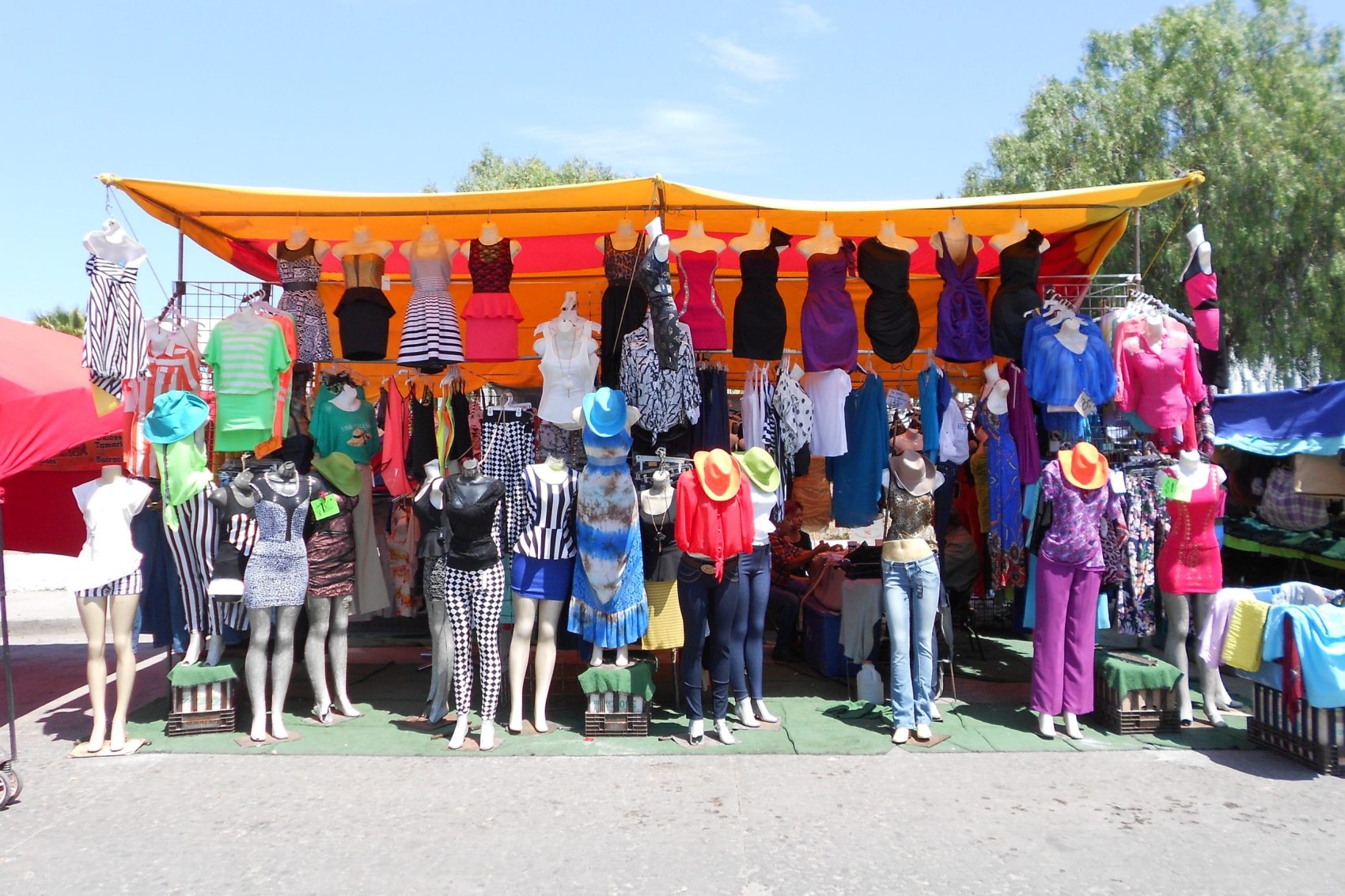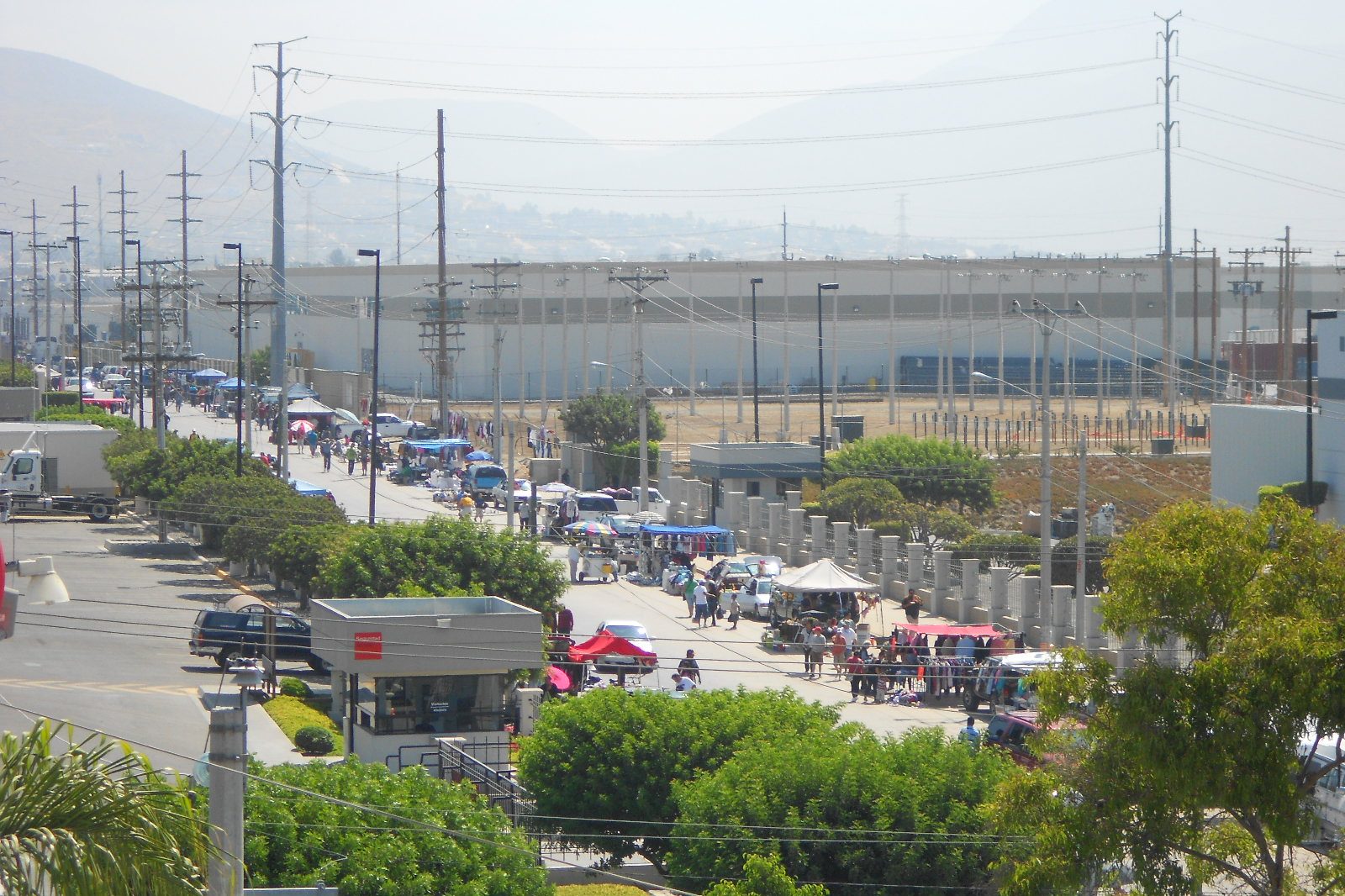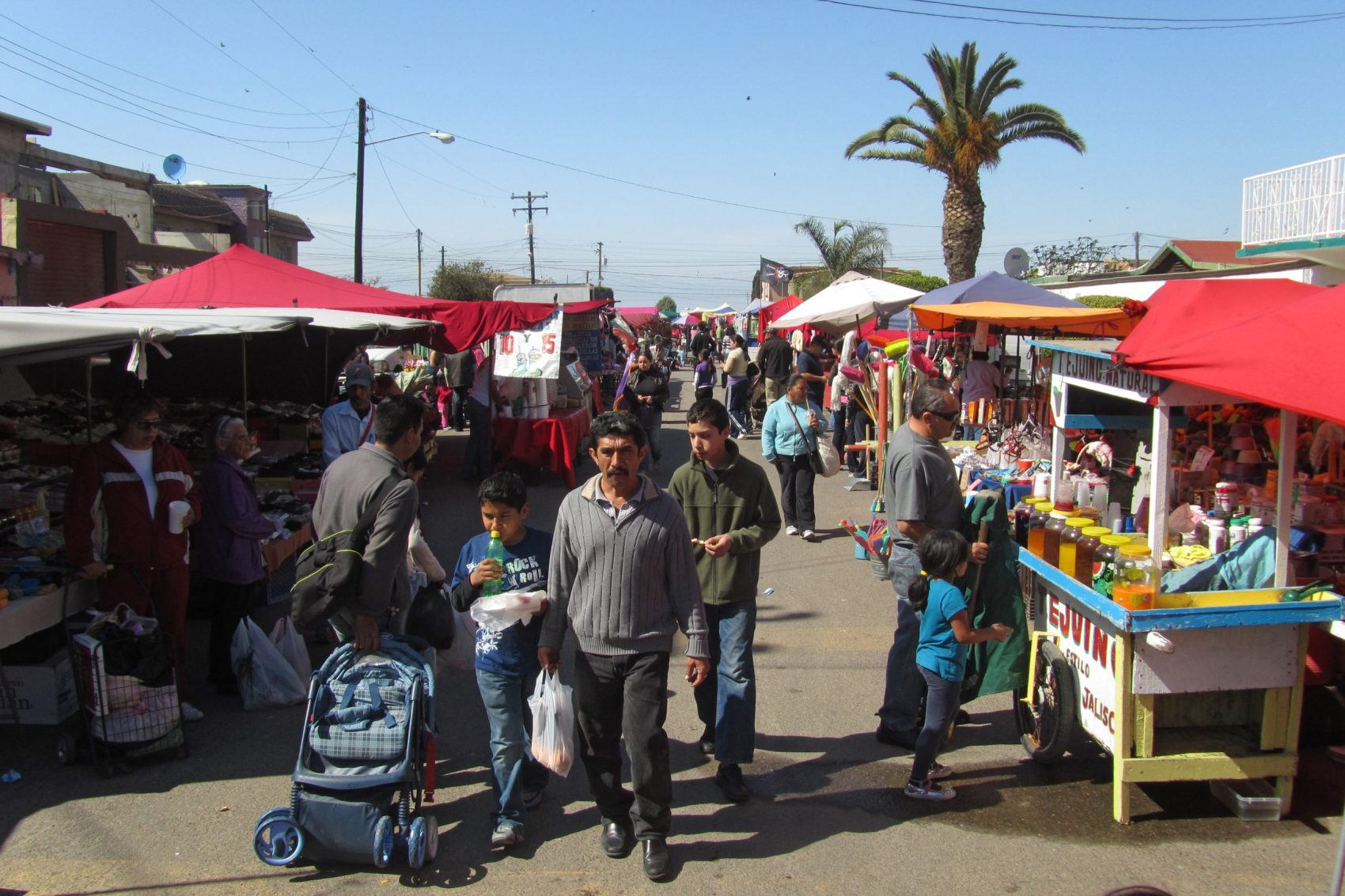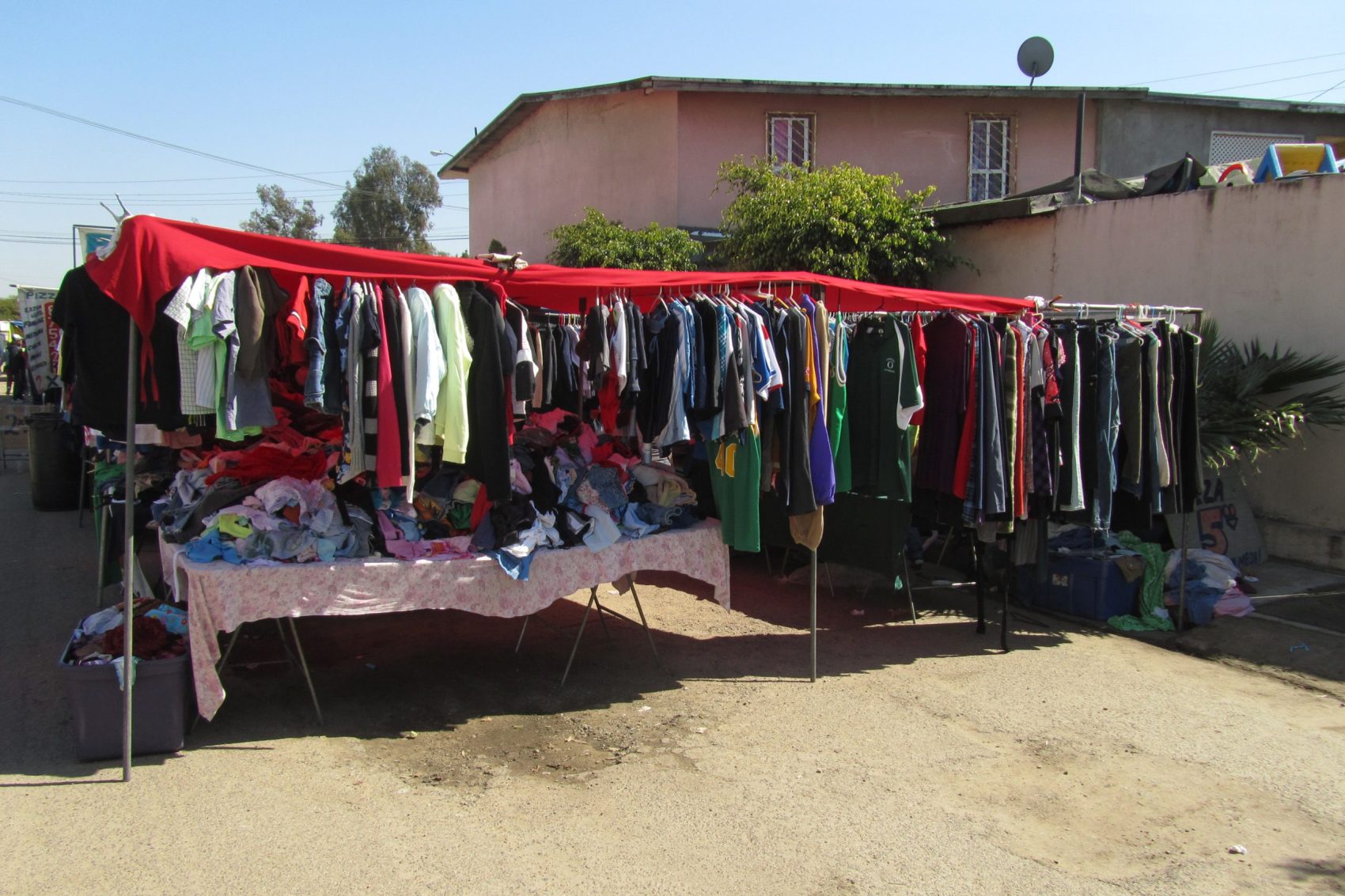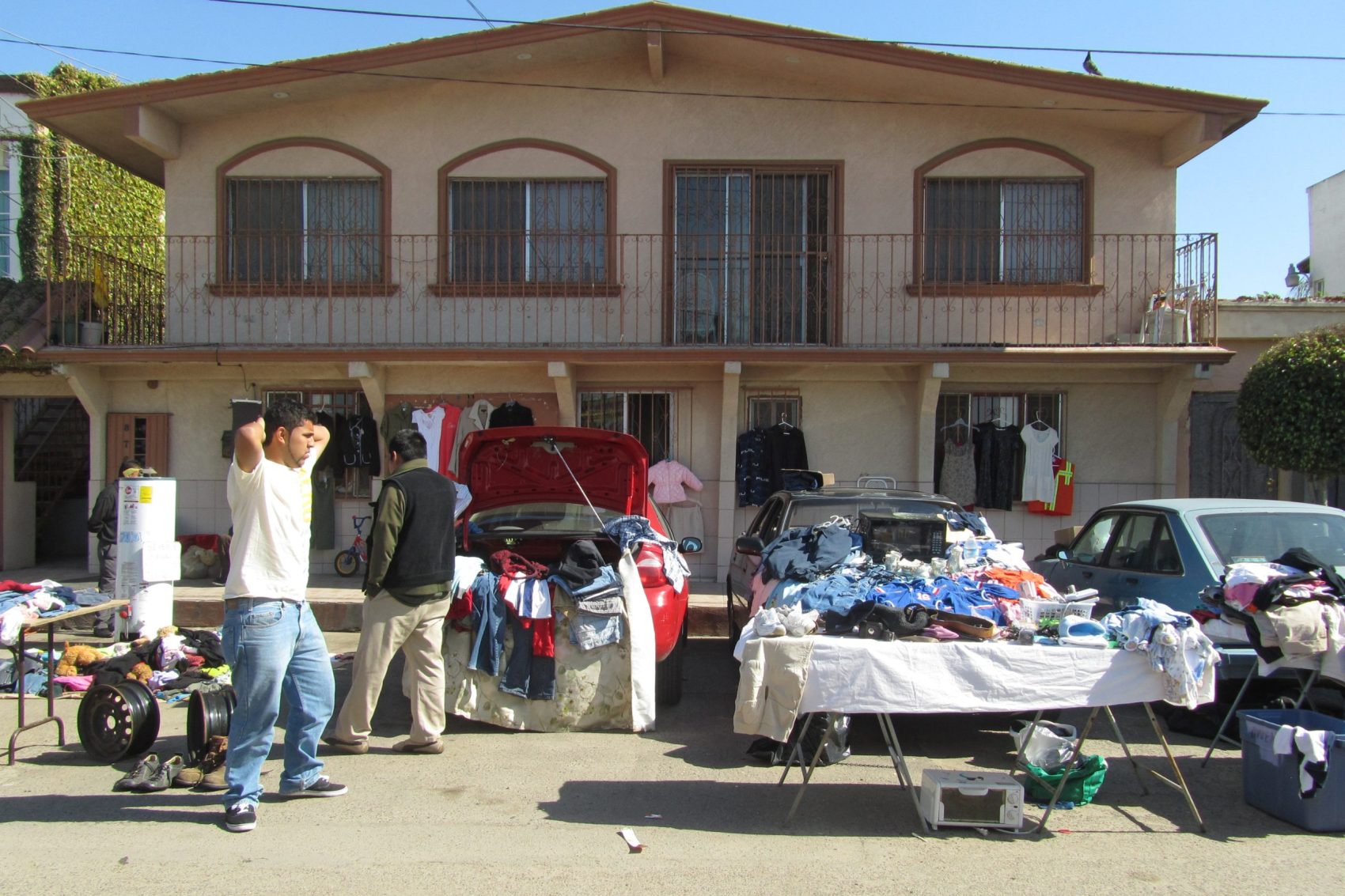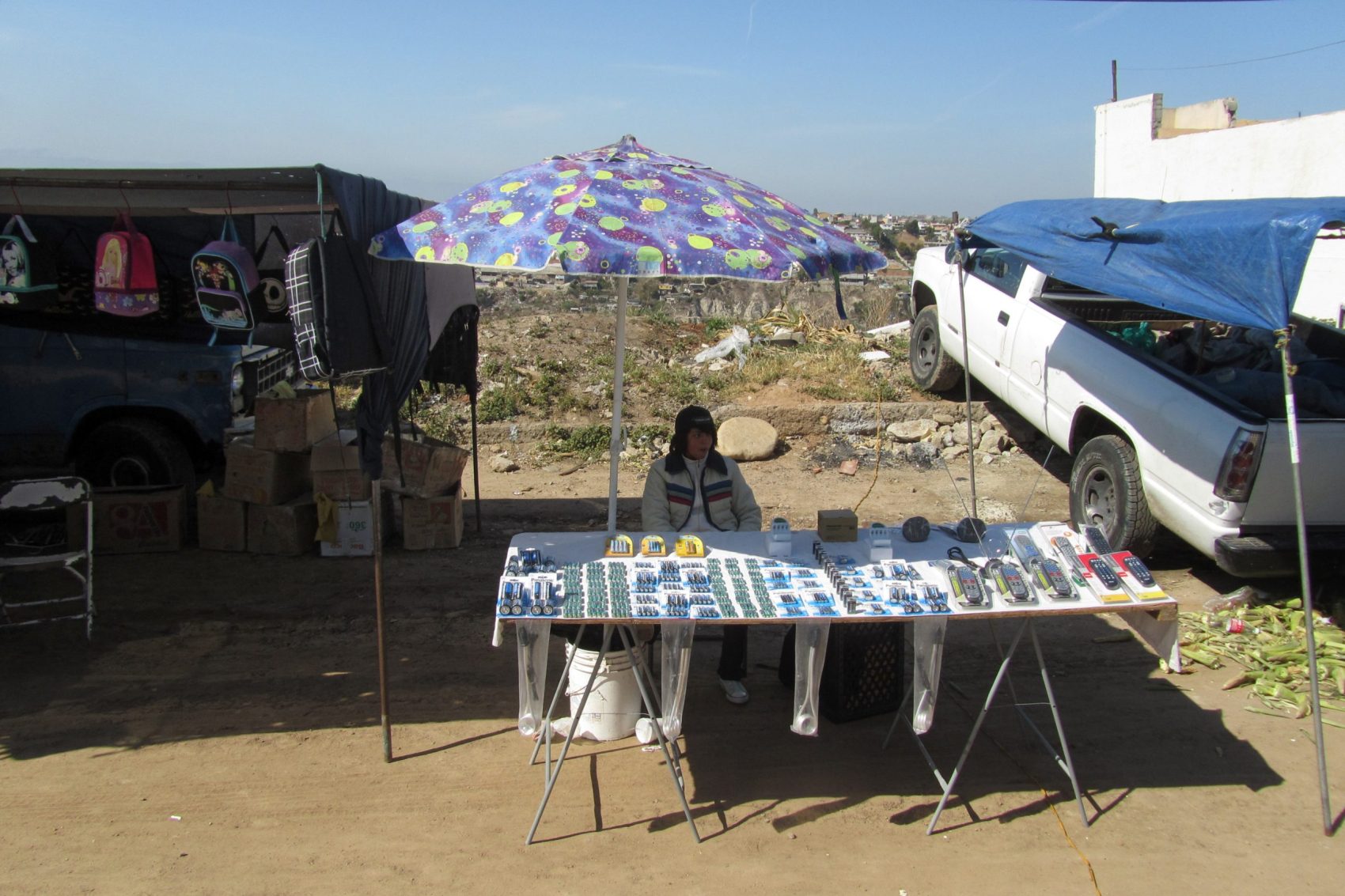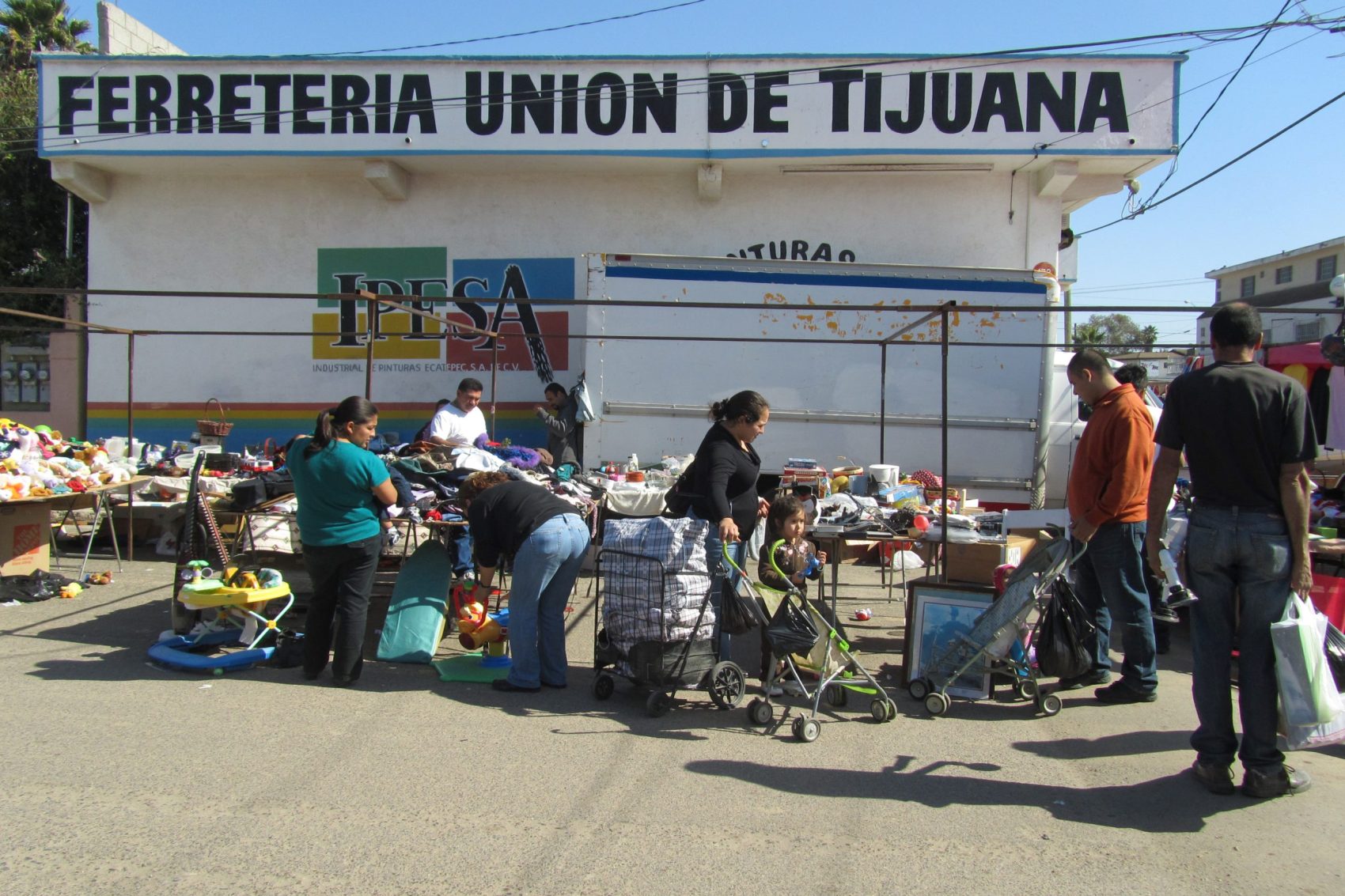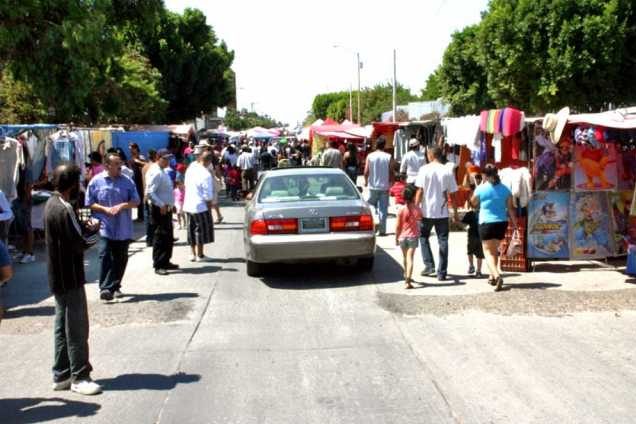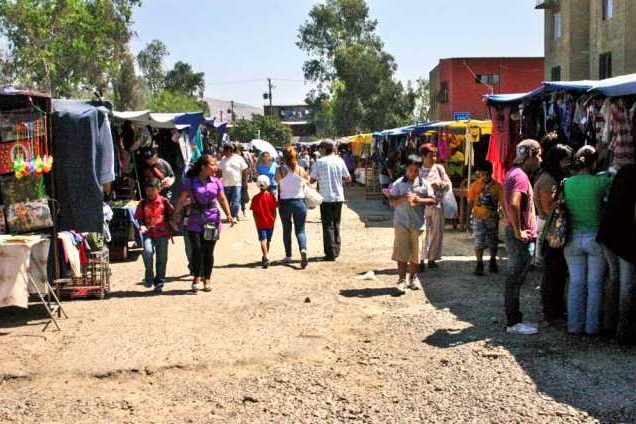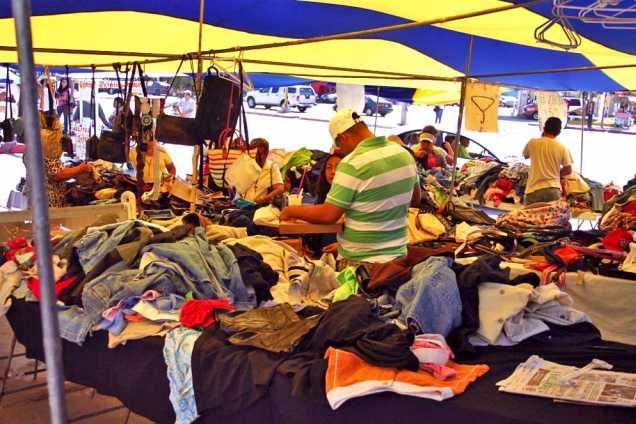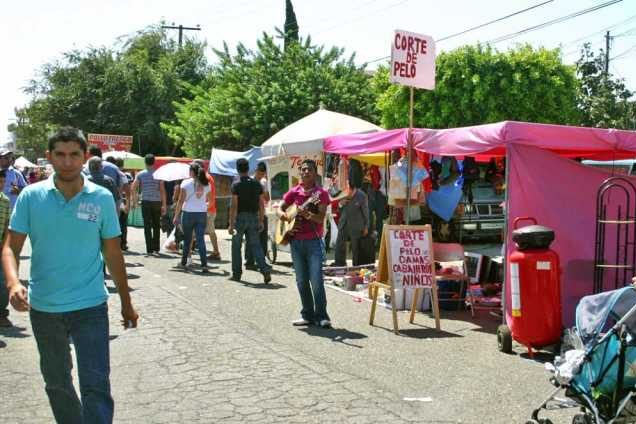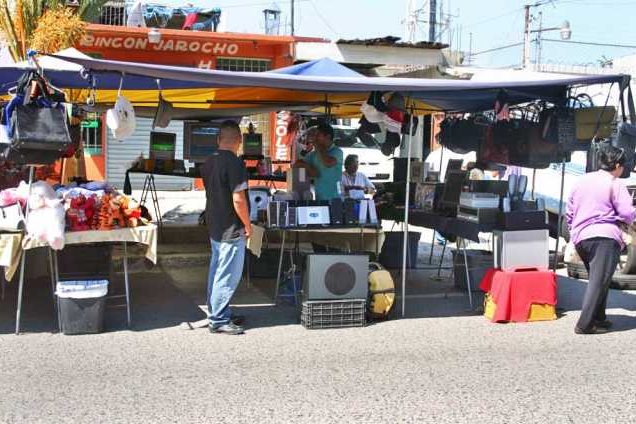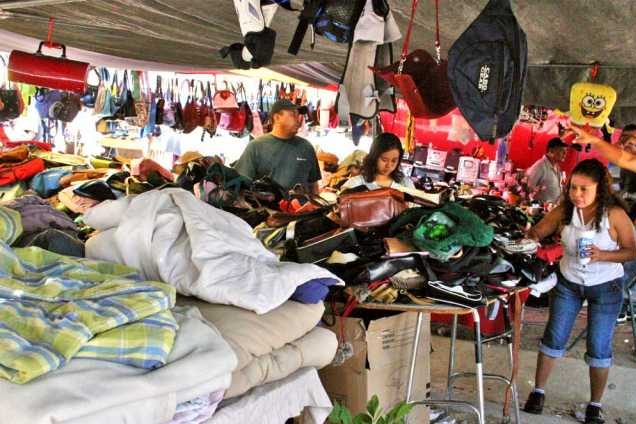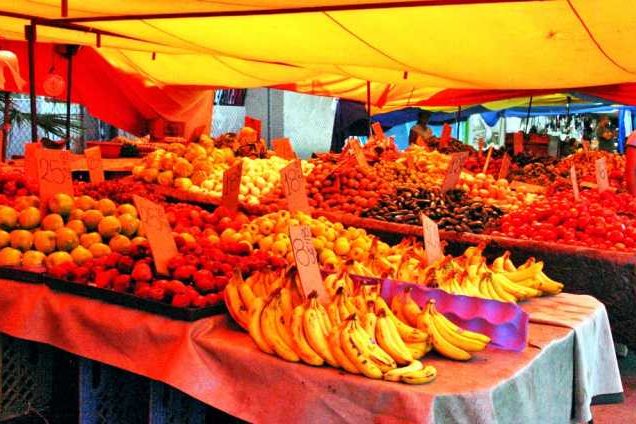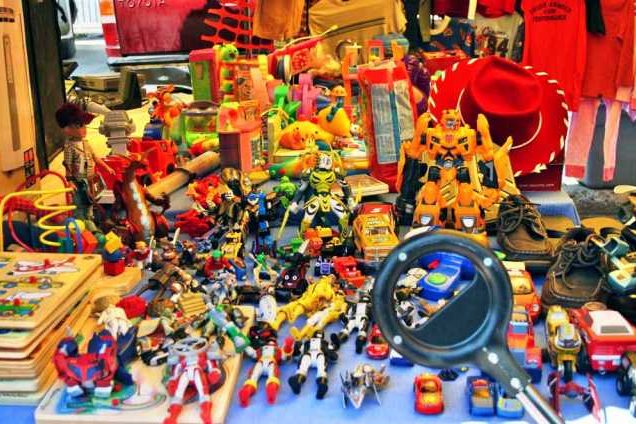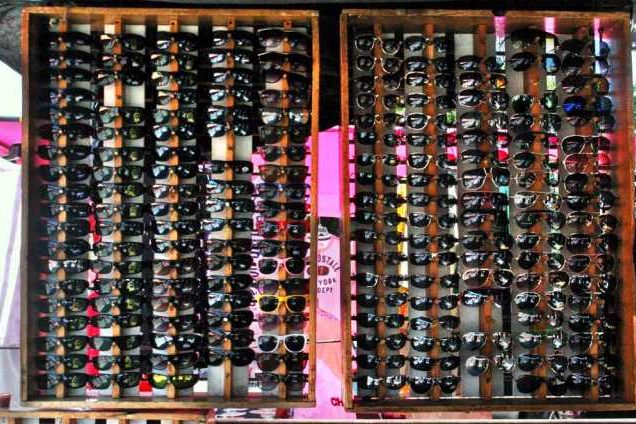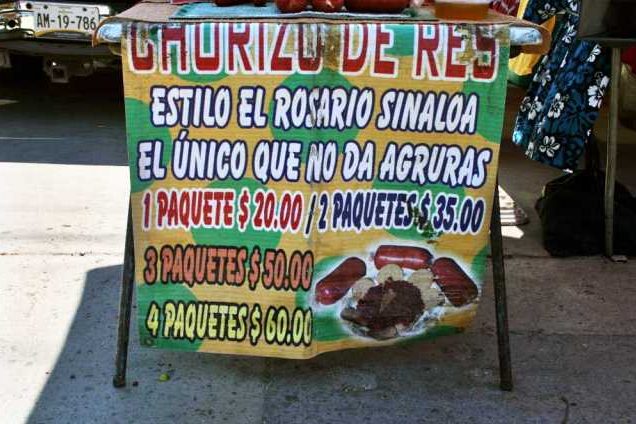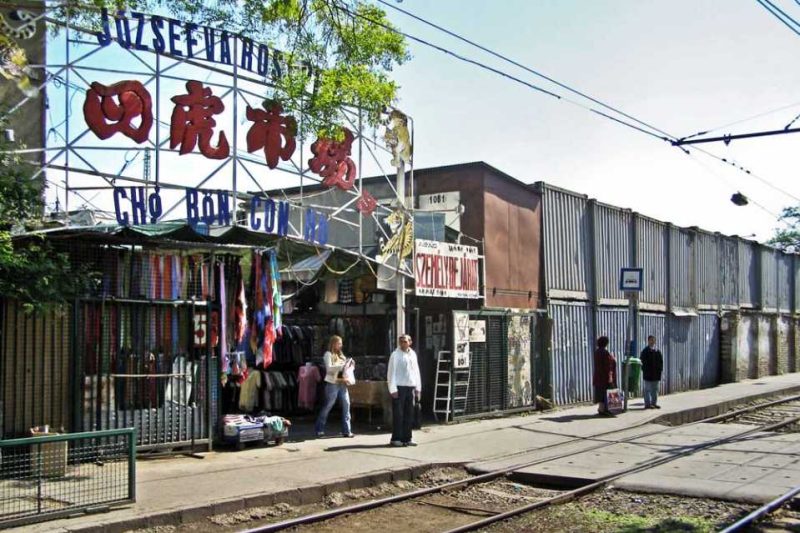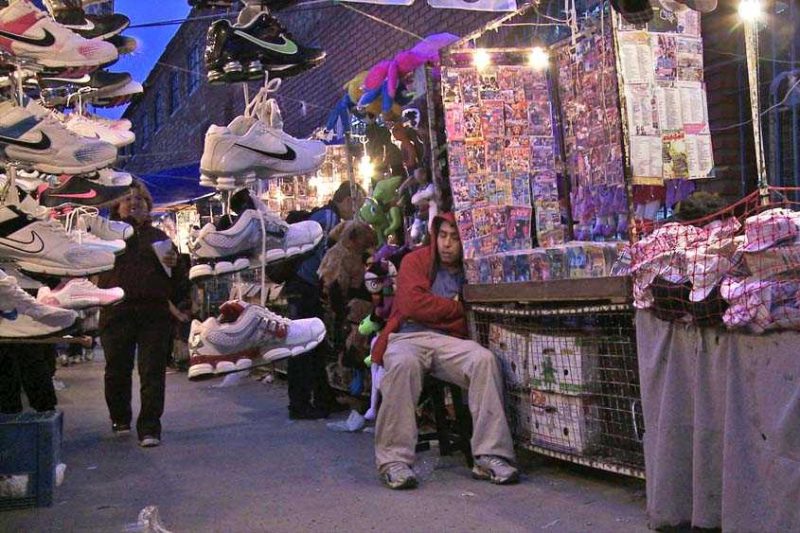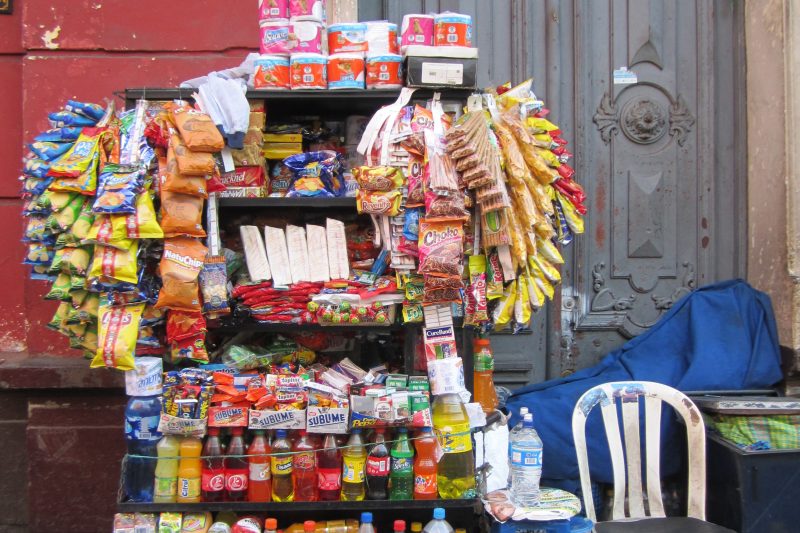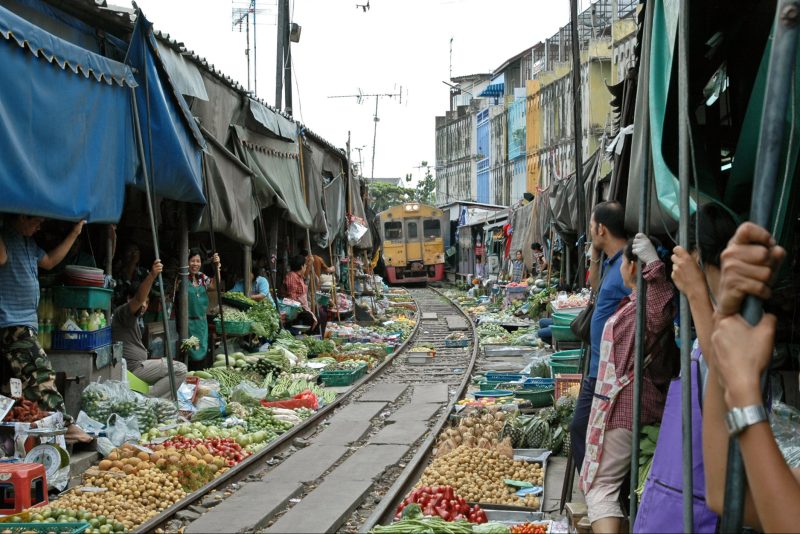- MOBILITY: URBAN INFORMALITIES
- FWF
- 2010-2015
- Other Markets
Case Study: Mercado Sobreruedas
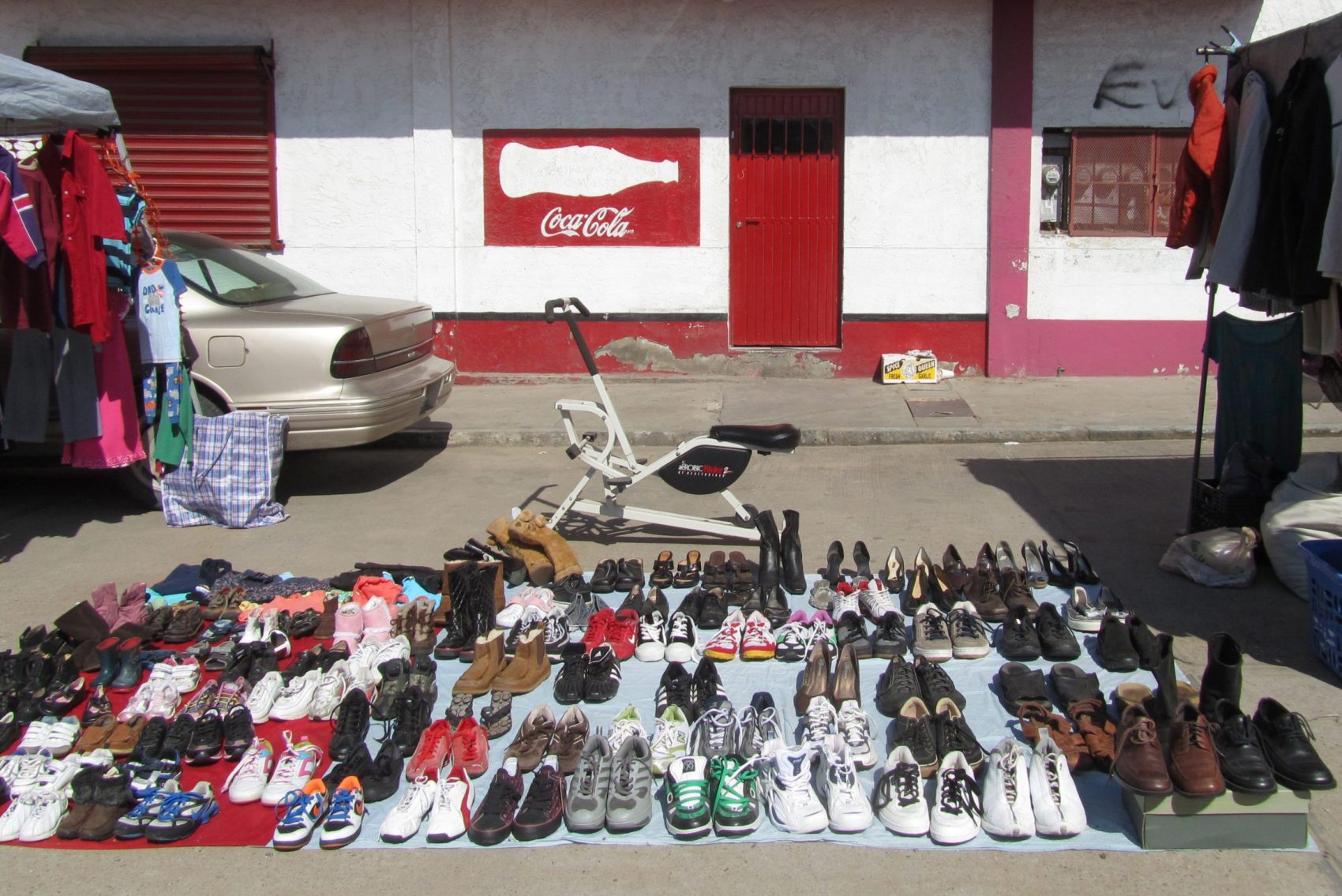
Sobreruedas Tecnologico, Tijuana, 2012
A BORDER TOWN STREET MARKET
In Tijuana, Mexico, like in other border towns, a combination of different social and economic factors has created a set of conditions that encouraged the formation of a complex system of informal street markets commonly known as mercados sobreruedas. This term can be translated as “on wheels markets”, revealing a key aspect of the markets: the constant moving from one barrio (neighborhood) to another.
There are other names used to refer to these informal markets in Tijuana, too, like the name Tianguis that has an indigenous origin in the ancient Nahuatl language. The diversity of names stems from a long and diverse history of popular markets in Mexico that can be traced back to the pre-Hispanic era. A variety of studies discuss the market tradition in Mexico, such as El Tianguis de Toluca: Una Reminisencia de los mercados prehipanicos (1995) by Marcelin Castillo.
In Tijuana, the sobreruedas is a massive and rapidly growing phenomenon. La Frontera (www.frontera.info), a local newspaper, reported in October of 2011 that the number of permits given by the mayor´s office to vendors working in these kinds of markets has risen dramatically in the last five years. An official report published by the Dirección de Inspección y Verificación Municipal, the office that grants this type of permit, found that from 2005 to 2010 the number of permits had shot up from 8,435 to 14,138, an increase of 68%.
The main explanation for this social and economic phenomenon is the expansion of informal labor caused by the growth of unemployment in México and the low wages paid in most of the formal enterprises. Both of these factors have led to a massive expansion in the informal economy, not only in Tijuana but in the whole country.
As an economic phenomenon, the sobreruedas markets in Tijuana fulfill two distinctive functions: providing work for thousands of people amidst the ups and downs of the fragile economy of Mexico, and serving the marginal sectors of society with basic goods. Since the early twentieth century the mercado sobreruedas has brought basic products such as food or clothes to the slums on the margins of the city. Still, today, most of the markets in Tijuana can be found in the popular, less affluent neighborhoods of the city.
Location(s): Tijuana, MEXICO On-Site Collaborator:Geovanni Zamudio
Colegio de la Frontera Norte, Tijuana
Photography: Geovanni Zamudio
Peter Mörtenböck
Helge Mooshammer
Results of this case study were published in:
An informal market
A particular characteristic of these markets is that most of them are administrated by either one of two large unions that, besides other smaller unions, specifically operate in these markets. One is the ALOP, also known as the union of Doña Chui, and the other is the Margarita Maza de Juarez Union. All these unions where formed during a long history of struggle and popular movements, which are also responsible for some of the informally established slums in the city (Valenzuela 1988).
In each market, the streets are divided between the unions. These divisions can be recognized by the different colors used by each union for the covers of the stalls. While the ALOP has red tents, the Margarita Maza de Juarez Union has blue yellow striped tents. Don Esteban, a vendor who works with the Margarita Maza de Juarez Union, told me that most of the time the relation between the unions is peaceful. Problems arise when a vendor from one union tries to set up stall in another union’ s territory. An intrusion which the colors of the tents would immediately flag up.
The unions that control the markets act as a bridge between the vendors and the state. Their organizations intervene in decisions whether new markets can be created or whether a current market can expand, and they also control the distribution of new spots. In the markets the unions assign one vendor for every street as a coordinator who also organizes the installation of the stalls in the morning.
Border life and second hand trade
Despite nominal state regulation, the markets function with a variety of legal irregularities: none of the workers have social protection, salaries are negotiated directly with the employer and there is always the risk of losing the job. The market also breaks certain fiscal rules with the types of products that are sold. There are used goods that cross the border as trash and avoid quality regulations. Raw and cooked foods are sold without health inspection, and also some illegal merchandise, like pirated music or films, is available for purchase. On some markets, like the one in the red light district of Tijuana, one can buy drugs or use illegal services like prostitution.
Stalls selling used goods are the most common stalls in the market. Some only sell used clothes, used tools, used shoes or used computers, while other stalls sell a whole range of used goods. Most of these used goods that people sell in the sobreruedas markets in Tijuana come from California. Sarah Hill, a former researcher at Duke University, comments that “both Americans and Mexicans along the border came to rely on the vibrant economy of discards, secondhand merchandise, and in some cases, the quintessential unwanted used up good: trash itself.” (Hill, 2009: P. 299)
Hill detects a profound relation between the culture of consumption in the United States and second hand consumption in the border towns of Mexico. She explains that consumerism, as the main ideological motivation of global capitalism, demands an easy mechanism for the disposal of excess goods. This dynamic system can be seen not only in Tijuana but in numerous towns along the border between Mexico and the United States.
As consumer trends in California shift, no longer wanted goods are given to charity organizations, sold in garage sales, or simply discarded as trash. People from Tijuana have appropriated this system of primary consumption and re-use, crossing the border to buy or collect these used goods and returning with them to Mexico to be offered for sale in the sobreruedas or in another round of garage sale in their own front yards. Although second hand consumption is not unique to the border towns of Mexico, it plays a particularly strong role in the cultural fabric of these cities.
A street market
All the sobreruedas are street markets set up directly on the streets in front of houses, often blocking entrances or access to garages. On the one hand, this can create a lot of trouble for the people living on these streets. Sometimes neighbors unite and file a complaint with the mayor´s office which can result in the removal of a market, but the unions also have a lot of political strength and they work to keep the markets open. On the other hand, the markets give life to the neighborhood. They provide people with a place where they can come together as a community, see their neighbors, meet new people and socialize. This is why despite the disruptions to traffic many people do not regard the markets as a problem. Rather, they value them as an important aspect of their everyday life.
In the context of Tijuana, the fact that the markets are installed on the street and create a social space open to everyone is extremely important. There are certainly other public spaces to socialize in Tijuana, but since its foundation, the city has lacked formal public spaces where people can gather. Shopping centers play an increasing role as public spaces for the community, but because these places are more difficult to reach and the goods are more expensive, access is limited by class and social position. Although both sobreruedas and shopping centers are places of commerce, the space of a street market such as the sobreruedas is very different from that of a shopping center, which is designed to present a constant atmosphere of perfection, with air, light and smells constantly monitored. As Beatriz Sarlo (2009) argues, the shopping center opposes the chaos of the city, while the street market confirms its chaotic dynamics.
Another important quality of all the sobreruedas markets is the fact that they come to the people. Since these markets are installed in different parts of the city, people don’t have to drive a long way to take their family for an ice cream or just to walk, they can perfectly do this in their own neighborhood once a week. This is particularly interesting given the everyday violence that exists in many of the popular neighborhoods of Tijuana. There are neighborhoods where people avoid walking on the street except for market days. In these neighborhoods, the markets serve as a means of conserving a space of tolerance and community interaction. Often, even the drug dealers and the gunmen take their families to walk or to get something to eat at the market. In general, people continue to respect the markets because they create a much needed space for the community to breathe, to relax, to talk, to walk and to share. In that sense, the sobreruedas are extremely important in the popular, poorer neighborhoods of Tijuana because they are one of the few social institutions that function as a vehicle for creating a sense of community.
Bibliography
Hill, Sarah, “El dompe, Los Yonkes and Las segundas”. In: Mc Crossen Alexis et. al., Land of necessity. Consumer culture in the United States-Mexico Borderlands. Duke University, 2009.
Sarlo, Beatriz, La ciudad vista, mercancías y cultura urbana. Siglo XXI, Argentina, 2009. (Sociología y política).
Valenzuela, Arce Manuel, Empapados de sereno: reconstrucción testimonial del movimiento urbano popular en Baja California (1928-1988). México, COLEF, 1988.
CONTRIBUTOR(S)
Geovanni Zamudio
Colegio de la Frontera Norte, Tijuana
